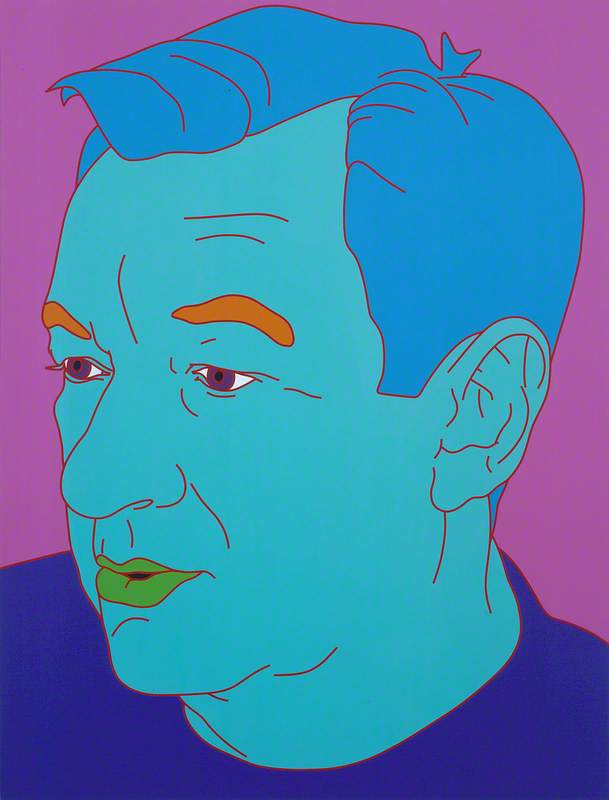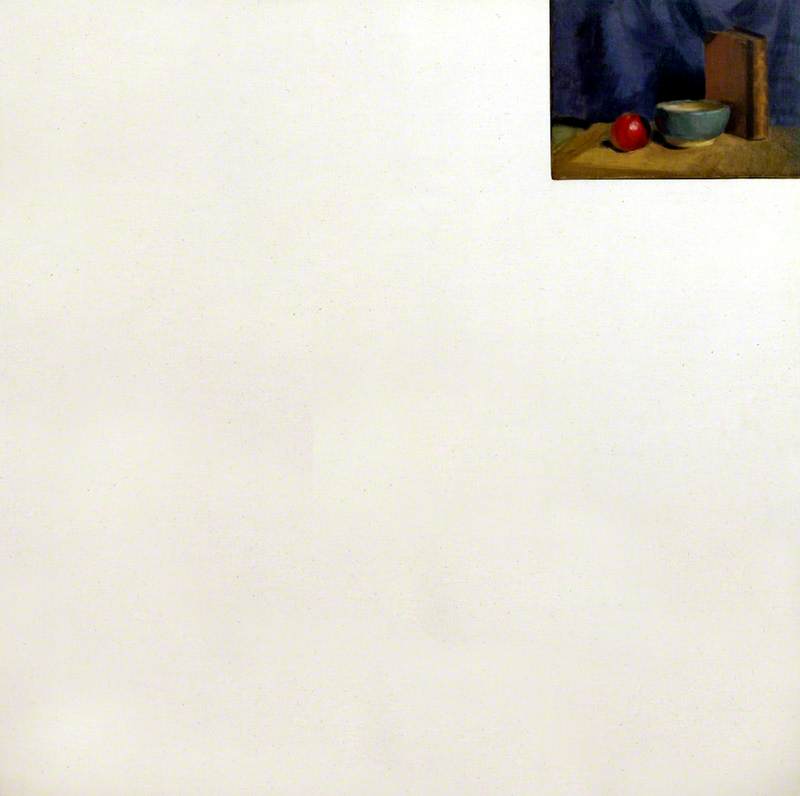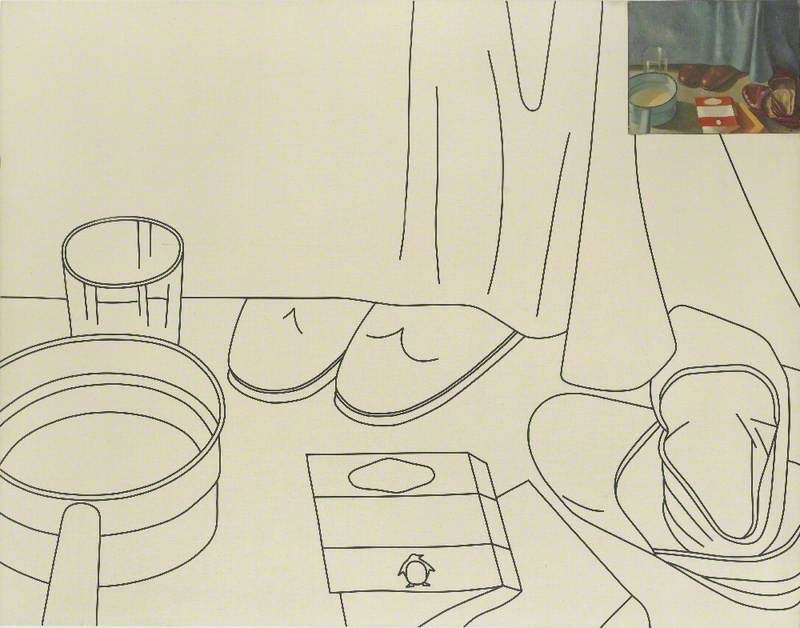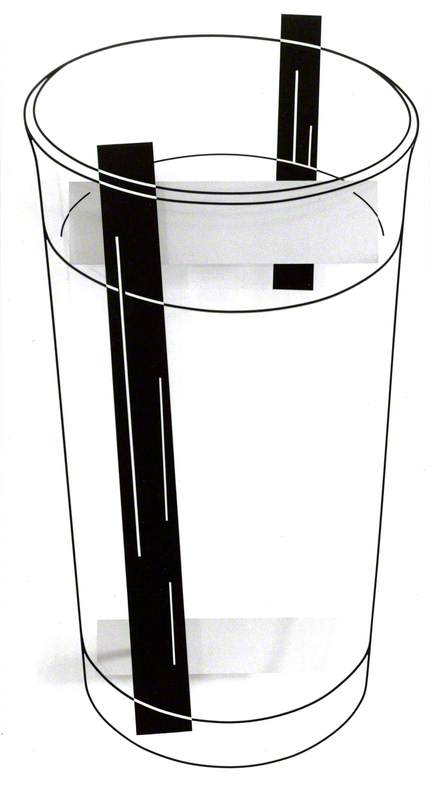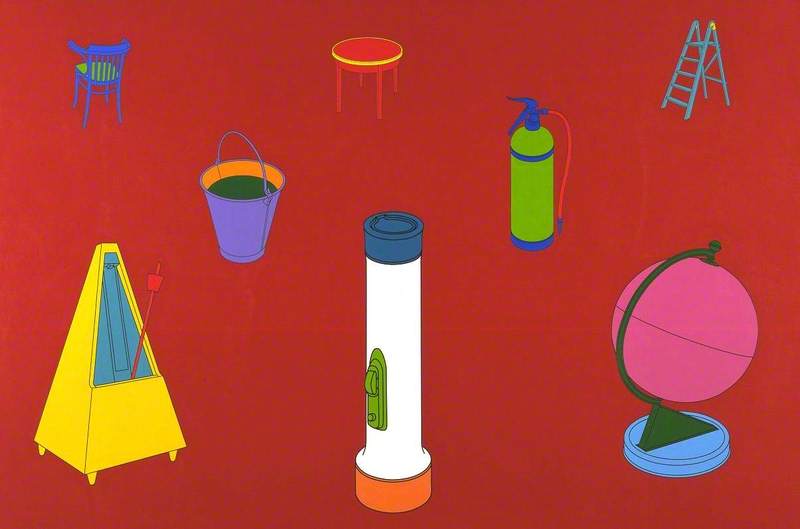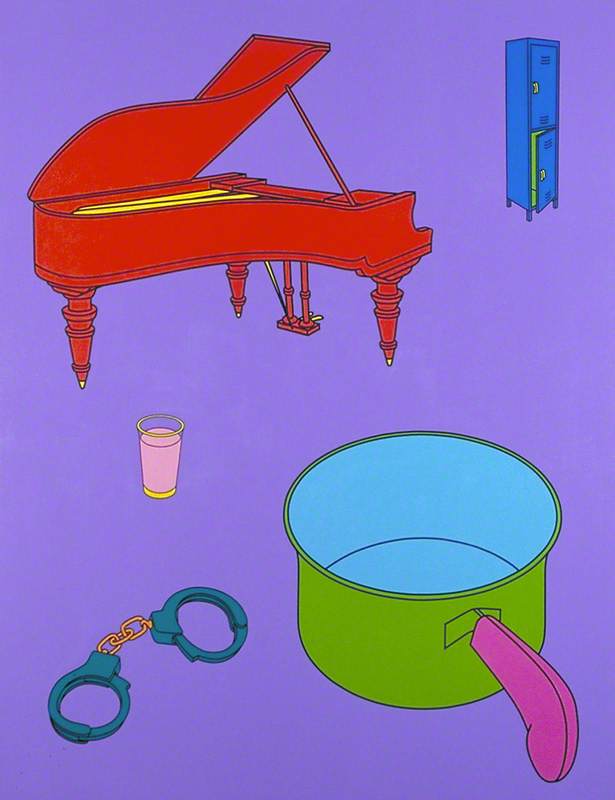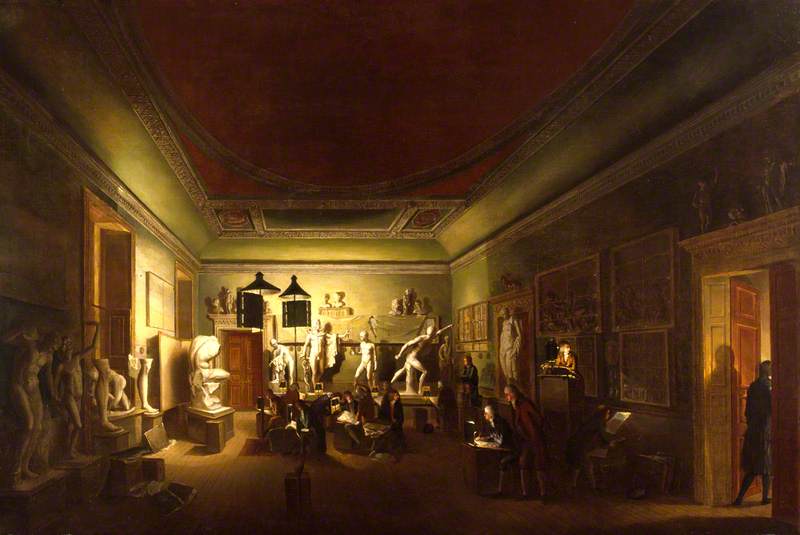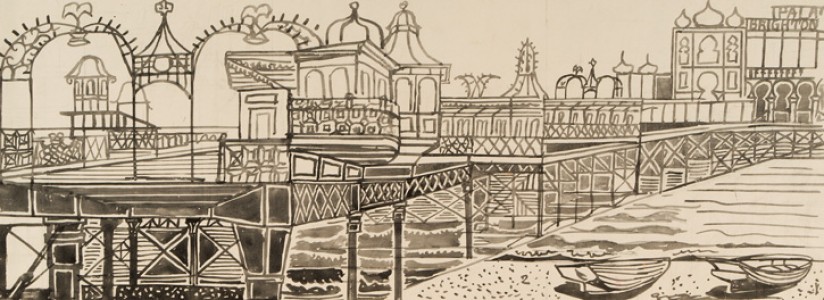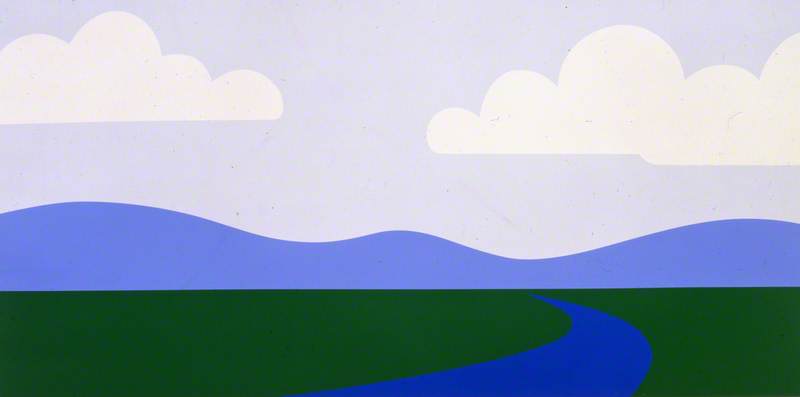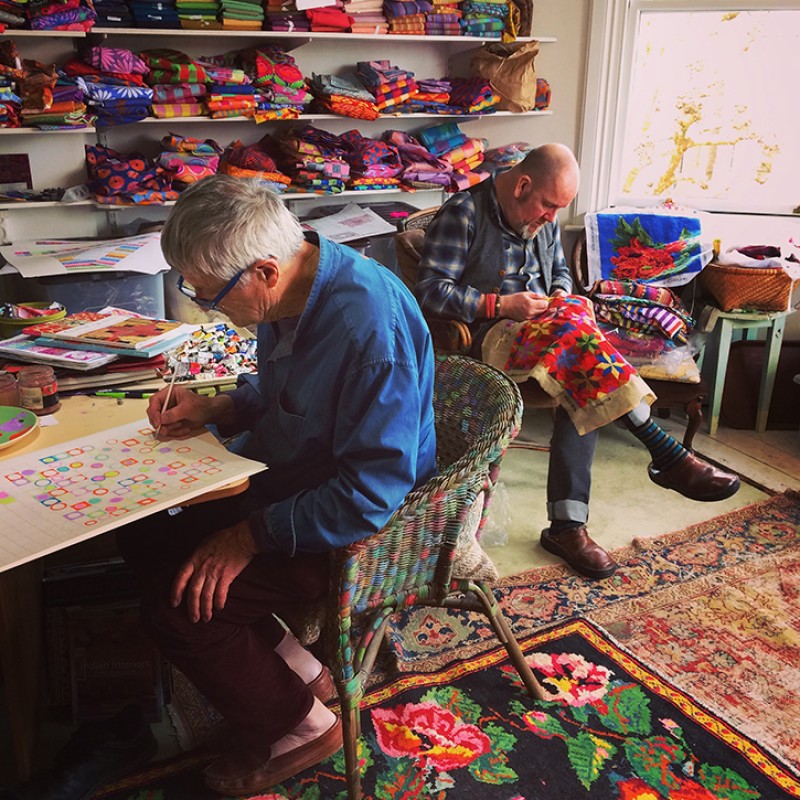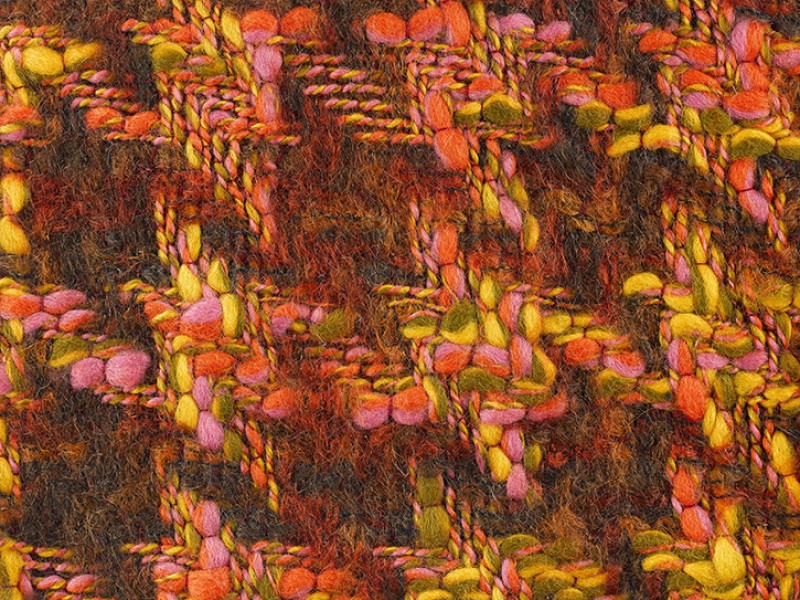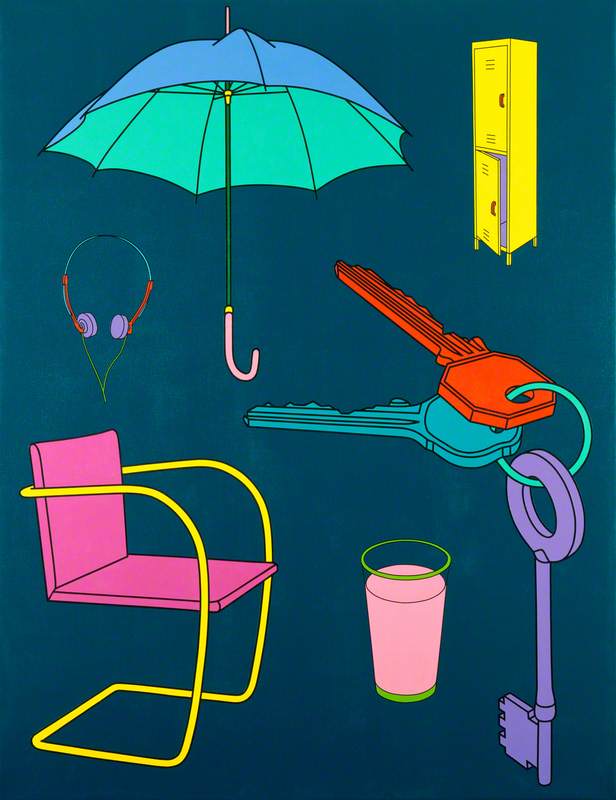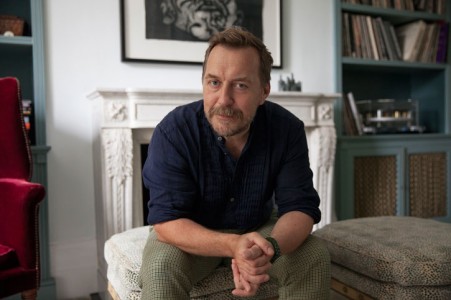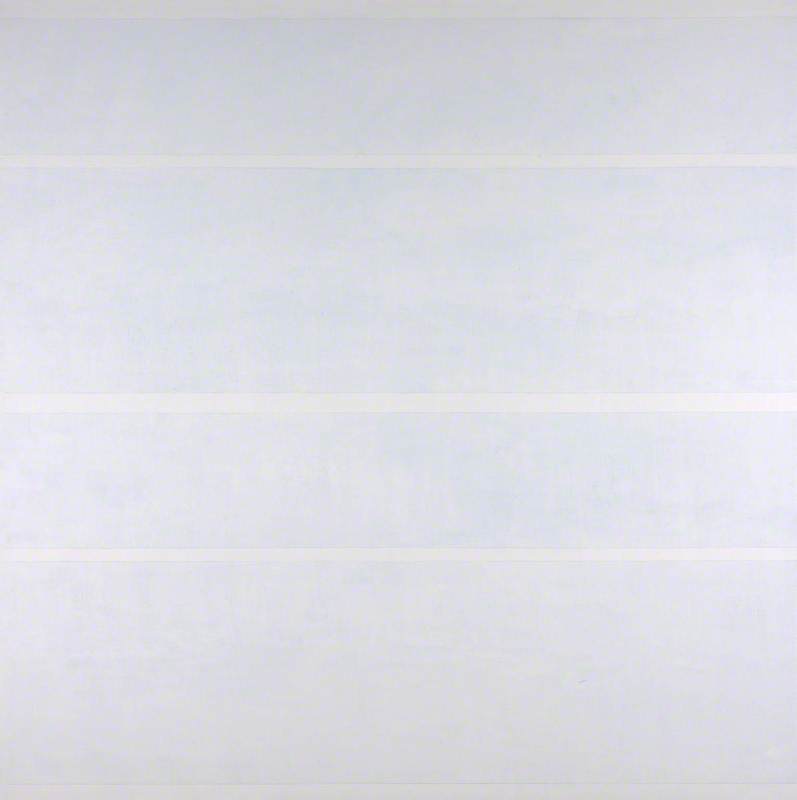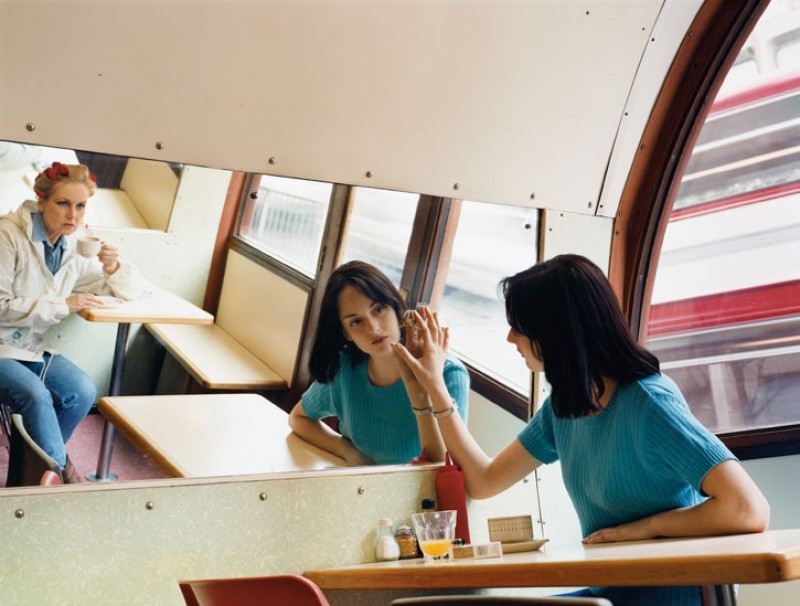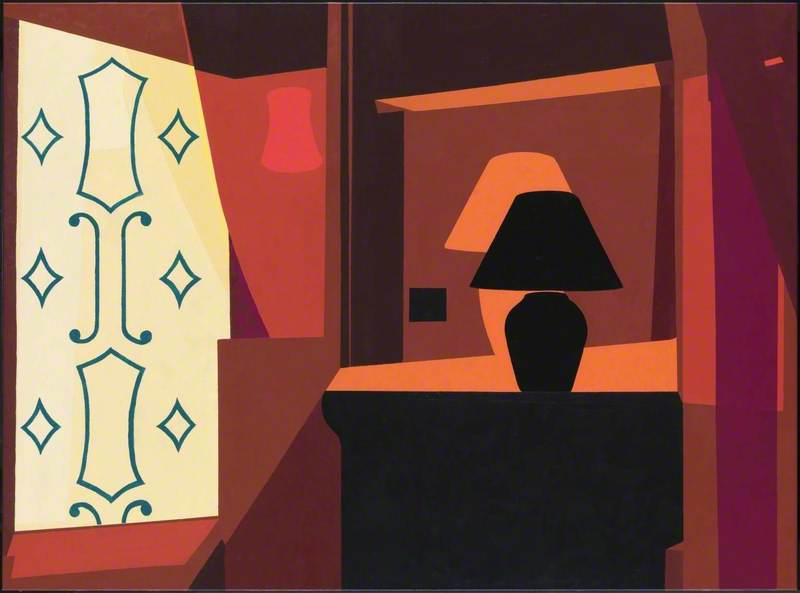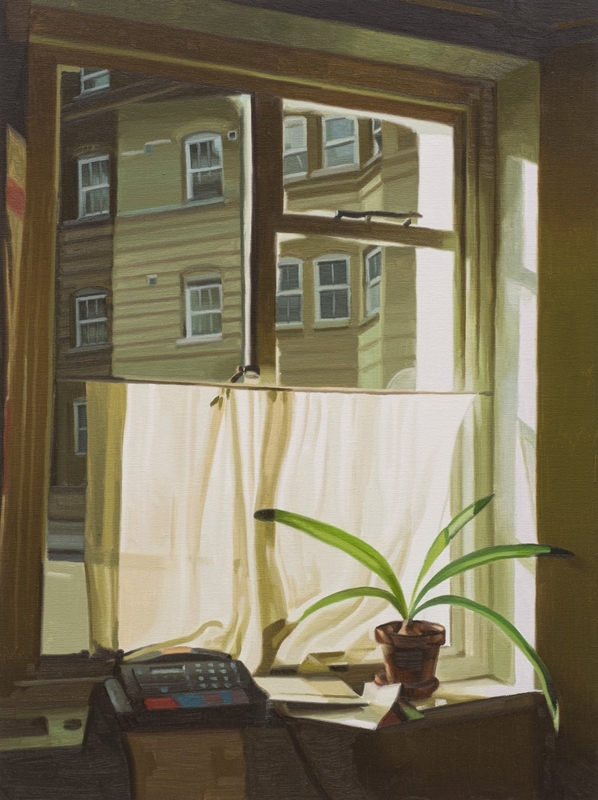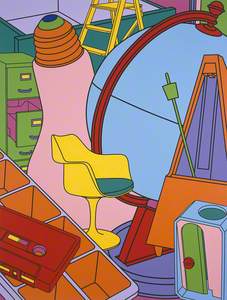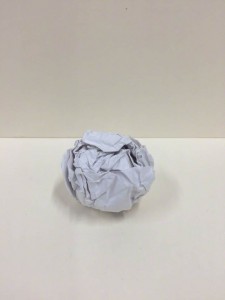The conceptual artist Michael Craig-Martin is best known for his iconic conceptual work of 1973, An Oak Tree: a glass of water on a shelf, with an accompanying text explaining that the artist had transformed it into an oak tree. He was immensely influential in teaching the famous group of Young British Artists (YBAs), such as Damien Hirst and Sarah Lucas, at Goldsmiths in the late 1980s.
Craig-Martin was born in Dublin in 1941. He studied Fine Art at the Yale School of Art and Architecture and has lived and worked in Britain since 1966.
In the 1960s he produced several series of starkly geometrical opening boxes relating to minimalist sculptures. Craig-Martin's first series of wall-mounted sculptures in the early 1970s explore conceptual themes about the role of the artist, inspired by the founder of conceptualism, Marcel Duchamp. They challenge our preconceptions about the nature of physical objects, the effects of gravity, and the meaning of words.
Later, in the 1970s, these themes were explored in wall drawings and paintings that contrast two- and three-dimensional representation, colour, outline and materials, the basic elements of western art. Untitled Painting No.1 and Painting and Picturing are examples from this period.
A Glass of Water, using the graphic shorthand of cartoons and advertising, refers back to Craig-Martin's An Oak Tree.
From the mid-1990s, colour became an important feature of his work – strong primary colours, which he has called 'basic colours with simple names'. These colours are unconnected with the objects depicted, distancing us from them.
These strong black outlines and bright colours are comparable to the interests of some Pop artists like Patrick Caulfield, although Craig-Martin's apparently random selections of household objects force us to try and make connections between them that may not exist. He presents them as deliberately impersonal objects, out of context and out of scale.
In Knowing the objects appear to be set in a real depth of space; soon, as in Housework, they are isolated and distinct; more recently, as in Inhale (Yellow), they are confused and overlapped.
Stepladders, metronomes, shoes, forks and buckets repeatedly reappear, as does the glass of water and Duchamp's infamous urinal and bottle-rack, deliberate echoes of Craig-Martin's conceptualist origins.
Recently these objects have more directly reflected contemporary life – iPhones, designer trainers, credit cards and plastic coffee cups – what he has called 'fundamentals' and 'objects of our time'.
As a tutor at Goldsmiths from 1974 to 1988 and 1994 to 2000, Craig-Martin had a significant influence on two generations of young British artists. Over the past 40 years he has had numerous exhibitions and installations in galleries and museums across the world and in 1996 he represented Britain in the 23rd São Paulo Biennial.
A retrospective of his work was presented at the Whitechapel Art Gallery, London, in 1989, and a second at the Irish Museum of Modern Art in Dublin in 2006, and a third at the Serpentine Gallery, London, in 2015. In 2015 his first major exhibition in China began at the Himalayas Museum, Shanghai and travelled to Hubei Museum of Art, Wuhan.
In 2006 Craig-Martin was appointed a Royal Academician, and in 2015 was the chief coordinator of the Royal Academy Summer Exhibition, London. He was awarded a knighthood in 2016.
Andrew Greg, National Inventory Research Project, University of Glasgow
